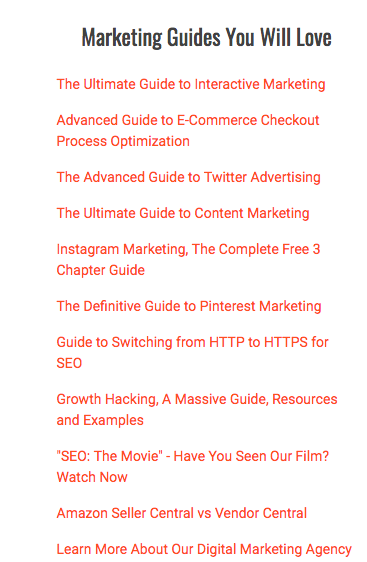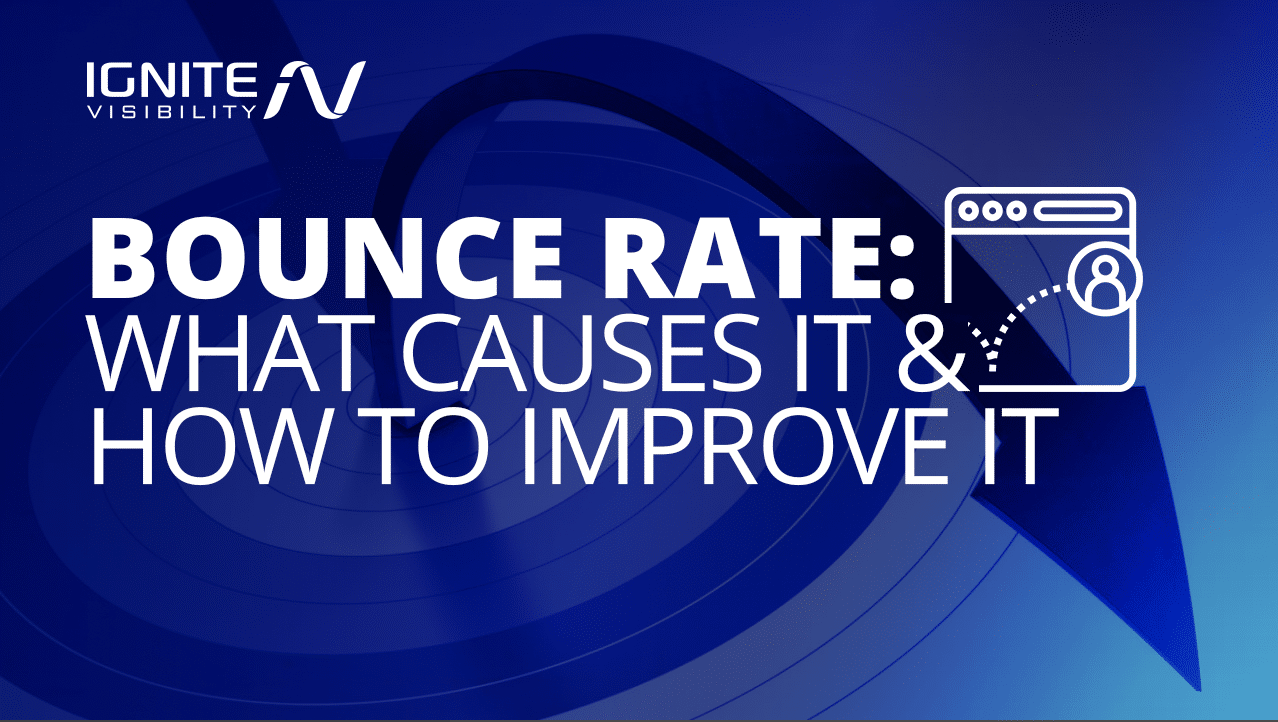
What We’ll Cover:
- What is Bounce Rate?
- What is a Good Bounce Rate?
- Common Causes of High Bounce Rate
- How to Improve Your Bounce Rate
- Bounce Rate By The Numbers
- FAQs on Bounce Rate
What is Bounce Rate?
Essentially, it refers to the percentage of visitors who come to your site but leave without visiting any other pages.
For instance, if your bounce rate is 80%, that means 80% of the people who come to your site are only visiting the page they initially landed on, neglecting the other pages on your site entirely.
And here’s how you calculate it:
Bounce rate = total number of bounces on a page/total number of entrances on a page.
Bounce Rate vs. Exit Rate – What’s the Difference?
The main difference between bounce rate and exit rate is the nature of people’s engagement with your site.
While the bounce rate is the percentage of people who left your site after only viewing one page, the exit rate refers to the percentage of views on a page that were the last someone saw while browsing your site.
Why Do Visitors Bounce?
The answer could be one of two things:
- Your website wasn’t engaging enough
- Your website is attracting the wrong kind of visitor
Why Do We Care About the Bounce Rate?
The reason you should care about bounce rate is that a high bounce rate means people aren’t finding your content helpful or interesting.
If people are immediately going back to search results after landing on your page, it’s simply not a good sign, and people won’t dig deeper.
So, How Do You Find It?
With a better idea of “what is bounce rate,” you should know how to find it using your available reporting and analytics tools.
Specifically, you can now view this metric in Google Analytics 4 (GA4), but it’s different from how it was with Universal Analytics (UV). Google made the switch from UV to GA4 in July 2023, and with that transition came some changes to the metrics you can measure.
The fact is that bounce rate is no longer a measurable metric in Google Analytics. Instead, you can now measure “engaged sessions.” These sessions account for visits lasting at least 10 seconds, resulting in at least two page views, or seeing at least one conversion.
To put it simply, the percentage of sessions that aren’t “engaged” will give you your bounce rate now.
You can see these metrics in your dashboard under the Acquisition tab in Traffic Acquisition.
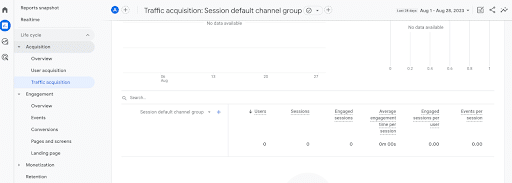
Traffic Acquisition
What Is a Good Bounce Rate?
Depending on the purpose of your site, having a high bounce rate isn’t necessarily a bad thing.
Some sites are designed with a singular purpose in mind.
For example, a singular blog post, contact form, or a landing page designed specifically around a call-to-action (call this number, product listings on other pages, etc.). These simple landing pages will tend to have a high bounce rate as people immediately click away when not interested in the proposed action, while service pages and portals typically have lower bounce rates as they engage and inform viewers.
But generally speaking, the lower the percentage, the better.
A good one, however, will vary by industry. According to data from marketing training company CXL, the benchmark bounce rate for the food & drink industry is around 65%, while the real estate industry sits at the lowest with about 44%.
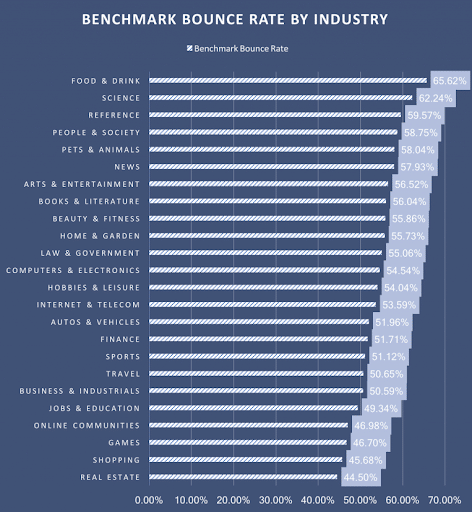
Benchmark Bounce Rate By Industry
For a general reference, keep the following numbers in mind when it comes to bounce rate:
- 80%+ is very bad
- 70 – 80% is poor
- 50 – 70% is average
- 30 – 50% is excellent
- 20% or below is likely a tracking error
Common Causes of High Bounce Rates
There’s not a one-size-fits-all explanation here. High percentages can be caused by a myriad of issues – some broad, some technical, and some in between.
But some causes are more common than others, which I’ll outline below:
1. Slow Page Load Speed
If there’s one thing we know, it’s that users simply don’t have the patience for slow load times.
Here are some stats that indicate how important fast load speeds are:
- Your bounce rate increases by a whopping 32% if your load time moves from one to three seconds.
- One in four visitors on a website will click away from a site if it takes over four seconds to load.
- 64% of shoppers who don’t like the user experience on a site will do their business elsewhere next time.
- Even a one-second delay reduces customer satisfaction by 16%.
- 46% of users won’t revisit a site that performs poorly.
Ouch.
These numbers are extremely unforgiving, and unfortunately, so are the users behind them.
Not only are users less likely to spend time on your site, but page load speed is a major ranking factor for Google. And low rank + high bounce rate = bad news.
Make sure you’re checking your page speed with Google’s PageSpeed Tools to ensure a fast experience – and lower this metric’s percentage – for your users.
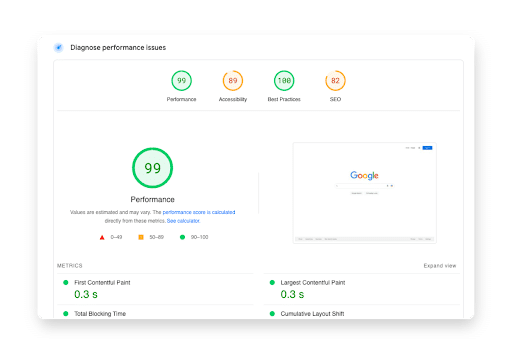
PageSpeed Insights
2. Poor UX
Your user experience (UX) needs to be great to reduce your bounce rate. Otherwise, people will likely click away from your website without moving further along.
Poor UX could result from confusing navigation that makes it difficult to explore the site. It could also involve a lack of information, inaccessibility for people with physical or cognitive disabilities, or mobile incompatibility that keeps mobile users from properly viewing your website.
3. Impact of Inaccurate Tags and Descriptions
It may not seem like it, but your tags and descriptions are incredibly important.
They’re intended to accurately describe the content displayed on a page, and it’s also what will help your users decide if they want to visit that page or not.
But if your tags or descriptions are inaccurate, your visitors will feel misled and likely won’t stick around.
Luckily for you, it’s an easy enough fix. Simply examine any pages that have a particularly high percentage and look to make sure all your tags and descriptions reflect the most accurate, up-to-date information available.
4. Improper Google Analytics Set Up
This one is probably your best-case scenario. It basically means that users aren’t actually bouncing frequently from your site; rather, you’re just receiving inaccurate information.
Remember how a 20% or below percentage probably points to a tracking error? That’s what we’re talking about here.
Without the proper setup, you won’t get the proper results. Luckily, Google walks you through the process of checking and fixing your tracking here.
5. Your Page Doesn’t Meet User Expectations or User Intent
When people land on your page from search results, they want what they’re looking for with that first click. If they don’t find the answers to their questions or the details they want about a particular topic, this is a quick way to get them to leave.
Make sure your pages are relevant to what people are searching for, and include information and designs that appeal to and engage users.
6. It’s Not Mobile Friendly
A big one here. If your site’s not mobile-friendly, you can kiss a major percentage of your conversions goodbye.
In today’s landscape, smartphones dominate how people spend their media time. So, it’s important to keep mobile top-of-mind:
- As of 2022, there are over 4.97 billion unique mobile internet users.
- As of September 2023, people using mobile devices contribute to 56.8% of all website traffic
Even Google’s in on the mobile search craze with its mobile-first indexing initiative.
If you haven’t taken the time to optimize your pages for mobile, there’s a very good chance that’s contributing largely to your high percentage for this metric.
Use Google’s Mobile-Friendly Test now to see how well your site performs.
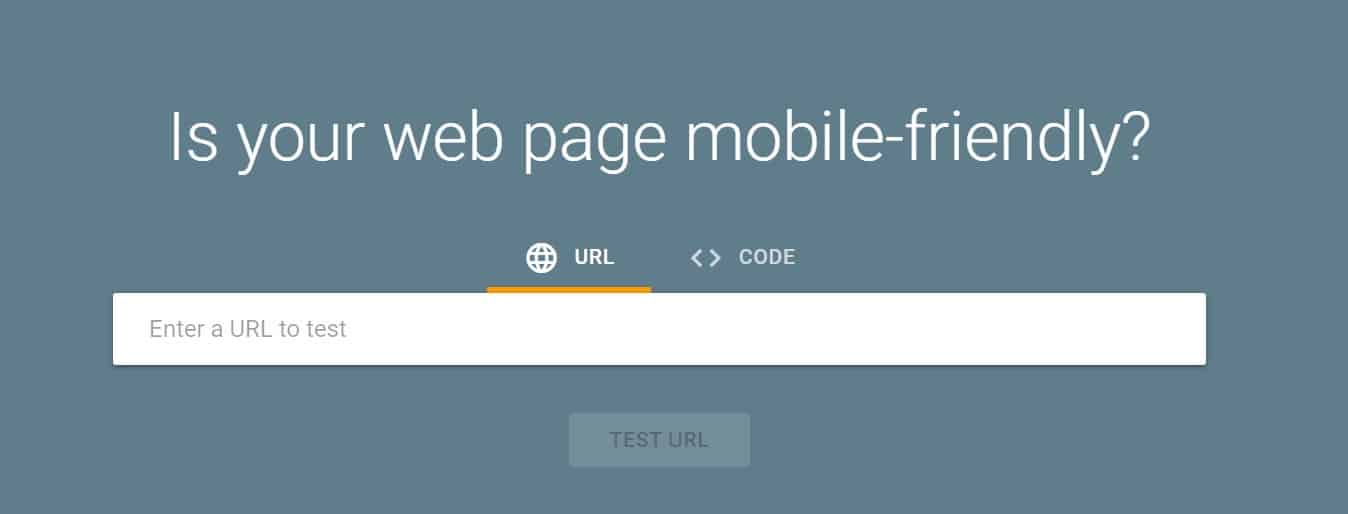
Mobile-Friendly
7. Your Page Just Isn’t Engaging
If you can’t blame a high percentage on a technical issue, it’s time to examine the page itself.
More often than not, you’ll find visitors aren’t sticking around simply because your page doesn’t speak to them. The content is irrelevant or outdated and doesn’t encourage them to learn more or take action.
This is when it’s time to call in your team of experts – web designers, content marketers, marketing masterminds, etc. – to examine how to reduce this metric and improve your user experience.
8. Your Design is Poor
Your website could also lead to a high bounce rate because of poor design. For instance, your content may be difficult to read, your images might be of low quality, or your design could be inconsistent down the page.
Consider conducting an audit of your site to determine if it suffers from poor design. You can then take steps to address this problem and optimize your site’s design.
How to Improve Your Bounce Rate
And now, the section you’ve all been waiting for. There are a number of benefits to figuring out how to reduce this metric on a website.
Some of the above are easy fixes (see: load speed, Google Analytics setup, etc.).
Others…no so much.
But, just because they’re not easy doesn’t mean they’re impossible. Let’s take a look at a few ways you can work toward improving.
1. Examine Your Target Audience
You can’t expect a user to stay on your page if they don’t really want to be there in the first place.
While you can entice any user with clickbait-y titles and irresistible offers, you want to make sure the visitors coming to your site are the type of customers that will benefit from your business as a whole.
This, naturally, requires an in-depth knowledge of who your ideal customers are.
Once you’ve gone through the process of determining your buyer persona and customer worldview, you’ll know what channels they use and what kind of content is relevant to them.
With that knowledge, you can design a site so chock-full of quality content that they won’t be able to fight the urge to have a further look around.
2. It Could be Related to Your Traffic Channels
Here’s another way to look at it: make sure your page lives up to its promise.
That means if you’re running a post on Facebook that links back to your blog, or creating an ad in Google Ads, make sure you deliver on whatever it says.
If people are clicking on your posts and ads and quickly bouncing, it means they haven’t found what they’re looking for.
To identify where the gaps in promise and deliverance are, keep an eye on your traffic sources. To track your channels, go back into Google Analytics.
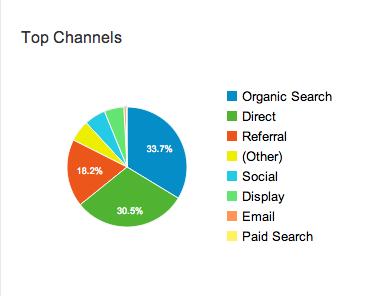
Check Your Traffic Sources
The Top Channels report will tell you the percentage for each channel grouping, and the All Traffic report will tell you the percentage for each source/medium pair.
If you find that a particular channel has a high percentage, you’ll know to further examine your strategy surrounding that channel.
Look at your content – does it really correlate to the content on your website? Is this really a channel your target audience is using?
3. Create a Better On-Page User Experience
Remember, the user experience depends solely on how the user feels about your site. This is subjective, and unfortunately, it isn’t really possible to please everyone.
But there are a few reliable ways to improve the experience for most users, including:
- Use only the highest-quality images.
- Create and upload videos.
- Include consistent, updated, quality content – always look to your best-performing content and note how it differs from content with a high bounce rate.
- Make it easily readable – clunky, text-heavy sites will likely see a higher bounce rate. Make sure your content is separated, and mix it up with headers, images, videos, etc.
- Make it effortless to navigate – make menus and headers easily clickable and well-organized.
4. Include Relevant Links and Suggestions to Decrease Bounce Rate
A well-placed link can make all the difference between a bounce and an extended visit. A relevant link in a blog post leading to more related content can guide users down a rabbit hole to quality pages across your website.
If you’re writing about SEO and happen to have a post about how to optimize images, absolutely include that link. It’s all about connecting your readers with more relevant content around your site.
It’s also a good idea to place links to popular posts and pages in your sidebar for quick navigation.
5. Include Well-Placed Calls-to-Action (CTAs)
Don’t let your users guess what they should do next because way too often, they’ll guess incorrectly.
So tell them. Want them to read more? Tell ‘em with a link. Want them to check out a similar product? Tell ‘em with a handy “you’ll also love…” link. Have an ebook you think they should definitely download? Lead them there with a well-placed pop-up.
CTA’s come in a variety of forms. That’s why you have to experiment with what works best for you and your readers.
Hint: Try buttons. They tend to be significantly more effective than links.
6. Embed YouTube Videos
Videos can be a great way to grab and hold people’s attention when they land on a web page. Consider embedding YouTube videos on pages where it makes sense to do so, such as a blog post about a certain topic.
You can even produce your own videos and embed them on corresponding blog posts, supplementing your blog.
Just make sure the video is relevant and supports whatever content you add it to on your site.
7. Fix Your Page Load Speed
As mentioned, page load speed is crucial in keeping people on your site. Try your best to get your page to load within zero to two seconds, but don’t let it go past four seconds.
If your pages load fast enough, people won’t get frustrated and return to search results. In turn, you’ll keep those eyes glued to your pages and further reduce your bounce rate.
8. Make Sure Your Content is Digestible
Don’t overload your pages with chunky content, and make sure it’s easy to skim. Break things up into sentences and try to shorten your paragraphs.
If people see content that doesn’t overwhelm them, they’ll be much more likely to continue scrolling down the page.
9. Use a Table of Contents with Jump Links
If you can, try to include a table of contents (TOC) for your web pages. These elements can clearly indicate what your page is about and essentially summarize all subtopics.
You can further help people find what they’re looking for by including jump links within your TOC. This way people can simply click without any need to manually scroll to the topic they really want to see.
10. Try Exit Intent Popups
Try to anticipate people getting ready to leave your site with exit intent popups. These are popups that appear when it looks like people are about to exit a page, giving them an incentive to stay.
Include a message like “Wait! You’re missing out on this great deal!” followed by a clear call to action. For example, you could encourage people to submit their emails in exchange for an ebook that gives them even more information about the topic on the page.

Exit Intent Popup
Bounce Rate By The Numbers
Bounce Rate By Industry
As a rule of thumb, blogs have an average of 65% or higher. That’s because people who land on blogs from the search results typically just get the info they need and move on.
Also, the “Contact Us” pages have a very high percentage. People who visit those pages are only looking for a phone number, email address, or other way to contact the business.
Similarly, “Form Submission” pages often have a high percentage because people usually submit the form and bail immediately.
Here are some average ranges for different types of websites:
- Blogs: 80%
- Travel: 82.58%
- Ecommerce: 54.54%
- Real Estate: 40.78%
- Healthcare: 59.50%
Bounce Rate By Channel
A channel in SEO refers to the origins of your traffic. There are several different channels:
- Direct – visits from people who navigate directly to the URL
- Organic search – visits from people who clicked on a link in the search results
- Paid search – visits from people who clicked on a paid search ad
- Display – visits from people who clicked on a display ad (such as a banner ad)
- Referral – visits from people who clicked on a link on another website
- Social – visits from people who click on a link from a social media site such as Facebook or Twitter
- Email – visits from people who clicked on a link in an email
It’s important to differentiate this metric by the various channels so you know where to focus your attention.
For example, if your bounce rate is unusually high from organic search, then that probably means the content on your website isn’t appealing to visitors. Adapt your content marketing accordingly.
FAQs on Bounce Rate
1. How do I identify signs of a bounce?
Some signs of a bounce include:
- Visitors click the browser back button
- Visitors enter a new URL in the address bar
- Visitors close the tab/window browser
- Visitors stay inactive for a duration exceeding 30 minutes or until the session times out
- Visitors click an outbound link
2. How do I reduce the bounce rate for my WordPress website?
One of the best ways to learn how to reduce it if you’re using WordPress as your content management system (CMS) is to install a “related articles” plugin.
You’ve probably seen that kind of plugin in action more than once on websites you’ve visited. Usually, “related articles” links appear at the bottom of the content. But, they can also appear in the sidebar and within the content itself.
Keep in mind that your WordPress theme might already include a “related articles” feature. If that’s the case, then all you need to do is activate it.
If not, feel free to browse through the many related articles plugins and find the one that works best for your site.
3. What is the problem with high bounce rates?
When people visit your website, you want them to stay. If you have a high bounce rate, that indicates that this isn’t happening. People have some problems with your site and are leaving.
This issue is exactly why you need to take steps to reduce your bounce rate and maximize engagement. Subsequently, your marketing efforts will be more effective and cost-efficient.
4. How do you monitor bounce rates?
Today, you can use various analytics tools to measure bounce rates. Specifically, you can use Google Analytics 4, but keep in mind that the specific “bounce rate” metric isn’t what you’ll need to track.
Instead, you can measure non-engaged vs. engaged sessions. Engaged sessions are those that lead users to spend more than 10 seconds on a page, view at least two pages, or end up converting in some form. Anything outside of these sessions counts toward your bounce rate.
5. What affects bounce rate?
There are many components that can contribute to your bounce rate, including low-quality or irrelevant content, poor web design, mobile incompatibility, inaccessibility, or confusing navigation.
Any of these issues can lead to a sharp rise in bounce rates as users leave dissatisfied with the user experience.
Ready to Reduce Your Bounce Rate?
You can’t optimize your bounce rates unless you have all the information you need at your disposal. Remember—as in most other aspects of digital marketing, it’s all in the data.
Our team of digital experts is ready to take all of the data into account and watch for patterns to emerge that will help solve the problem of high bounce rates where there shouldn’t be. We’re ready to help you build a solid strategy that increases your page speed, helps you create engaging content, increases conversions, and ultimately lowers your bounce rates.
Interested in learning more?
